Love Buying a Home series – Week 6
My step-by-step series will take you through the entire home-buying process — from finding a buyer’s agent to settlement day, and all the details in between. Every first-time buyer will find this information-packed series easy to follow and understand. Make sure to tune in for the next few weeks!
Today’s mortgages are not “one-size-fits-all.” That means you’ve got lots of options out there that could fit your budget and finances. This is good news for many home buyers!
However, you do need to do your homework first so that your mortgage application can be processed properly and with success. The lending environment can be complex and complicated at times. Lenders, underwriters and mortgage insurers must all complete certain steps before they can have your financing in place.
It’s important to try and keep things going smoothly by taking on a few steps of your own, and knowing what needs to be done next. This preplanning will help get your mortgage and financing all figured out. That way you can avoid any snafus when you least want them to appear.
Once your mortgage situation is all set, you’ll be in a much better position to negotiate with the sellers and move forward on a purchase. Here’s what you need to keep in mind:
1. Evaluate your affordability and don’t forget about your monthly budget.
Do you truly know how much mortgage you can afford and how lenders determine it?
Lenders and mortgage insurers look at a variety of factors, but the two most important are your monthly mortgage payment and your total debt load, relative to your gross income. You may hear a lender call this your “debt-to-income ratio.”
But wait, let’s hit pause first and ask this question instead: How much are you actually comfortable spending on a mortgage payment each month?
This is a much better way to determine your affordability. It’s important to emphasize knowing what your monthly budget is for housing, NOT just the purchase price that your lender will approve you for!
Many of you will want your monthly housing expenses to be much lower than what a lender is willing to lend you. This topic was covered in detail in Do the Math – A Mortgage You Can Afford, (LINK) the fourth article in this series. Go back and review if you need a refresher.
This article makes you carefully look at your monthly budget, including current expenses and future ones as a homeowner.
2. Shop around and interview lenders or find a mortgage broker to find the best fit for your needs.
Most people will go to their primary bank to discuss a mortgage, but I always suggest talking to a few different lenders when shopping for a mortgage. Make sure that you talk with a mortgage specialist at a bank and not just a financial advisor, or bank teller. Another great option that I recommend to all my clients is to find a mortgage broker that you like. Mortgage brokers have access to almost all the big bank's mortgages, plus the mortgages of institutions that specialize only in mortgage products (they don’t offer anything else to their clients).
Remember that there is much more to a mortgage than just a good rate. Discuss the term, amortization, rate, and service-related things, like the institution's online platform, when determining which lender to go with. Also, understand any penalties for pre-payment, breaking the mortgage, or if it is portable to another home if you should move before the term is up. Your mortgage broker or banking mortgage specialist should ask you a lot of in-depth questions about your plans for the house and your financial standpoint to find the best loan product for you.
3. Discuss your loan options with lenders and your agent.
Deciding what types of mortgage are best for you depends on your personal situation, your financial scenario, and your future plans. It’s something you’ll discuss during your lender interviews or with your mortgage broker.
For example, if your down payment isn’t large enough to qualify for a conventional loan (20% down), you may qualify for an insured mortgage- and sometimes insured mortgages offer better rates! You may also qualify for an attractive first-time home buyer program offered by a local jurisdiction.
You need to sit down with your lender to understand the different options out there that could work for you and the type of home you most likely will purchase. And don’t forget that your agent is a good resource who can help guide you on your decision. They know what has worked for other buyers who may have similar finances.
4. Get pre-approved (not pre-qualified) by your lender.
Plan to complete a loan application with one or more lenders. Make sure to take it one step further from getting pre-qualified and get pre-approved instead.
By doing this you will know exactly what loan amount you will be approved for by the lender. (Remember, stick to your monthly budget no matter what you get approved for!) But this does give you the go ahead to look at homes in a certain price range.
To start this process, you will need to supply information to the lender along with your application. So make sure you’ve gathered the required documents before you meet with them. To get pre-approved, the lenders will perform an extensive check on your financial background and credit rating. You will be notified in writing the amount they are willing to lend you for a home purchase.
This process is an important step that will put you in a better negotiating position with sellers. Your pre-approval signifies to sellers that you are a committed buyer who has financing secured. When you make an offer, it won’t be contingent on obtaining a mortgage.
5. Commit to a lender once you’re under contract.
As soon as you are under a contract to purchase a home, you must “lock-in” and commit to working with one lender to complete your mortgage application. This needs to happen immediately upon going under contract to meet the deadlines you’ve agreed to in your offer. This what the "financing condition" in your offer if for- so your lending has time to firm up the financing and commit to lending you money for your home purchase.
Show your lender that you are serious about working in partnership with them by submitting all the required documentation as quickly as possible. At this point they also will be “approving” your home and will await its appraisal to determine if they will lend you money. You want the appraisal to come in at or above the sales price.
As you can see, there are certain steps you’ll need to take to get a mortgage. I can help you navigate through them. We want to meet to get the mortgage process out of the way well before you want to start looking at homes, so be in touch with me when you are ready. I’m here for you!
As you can see, there are certain steps you’ll need to take to get a mortgage. I can help you navigate through them. We want to meet to get the mortgage process out of the way well before you want to start looking at homes, so be in touch with me when you are ready. I’m here for you!
Stay tuned for next week! It’s the Fun “House Hunting” Guide is the next article in Love Buying a Home series. You’ll find out the ways you can shop productively (and smartly!) with tactics that will streamline your search.
